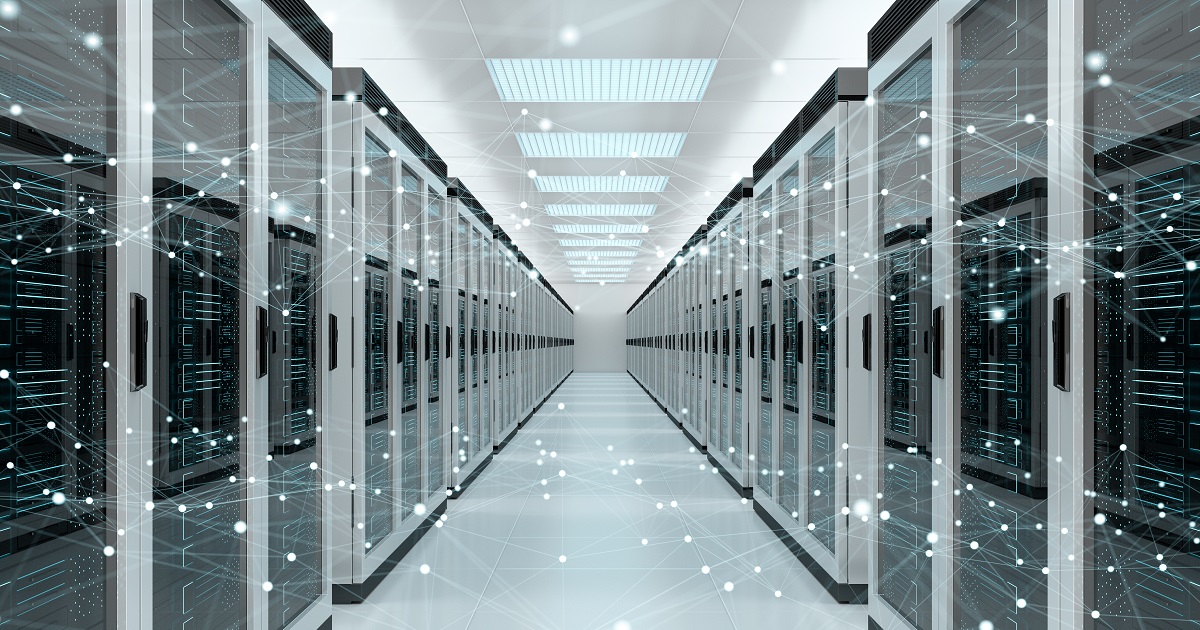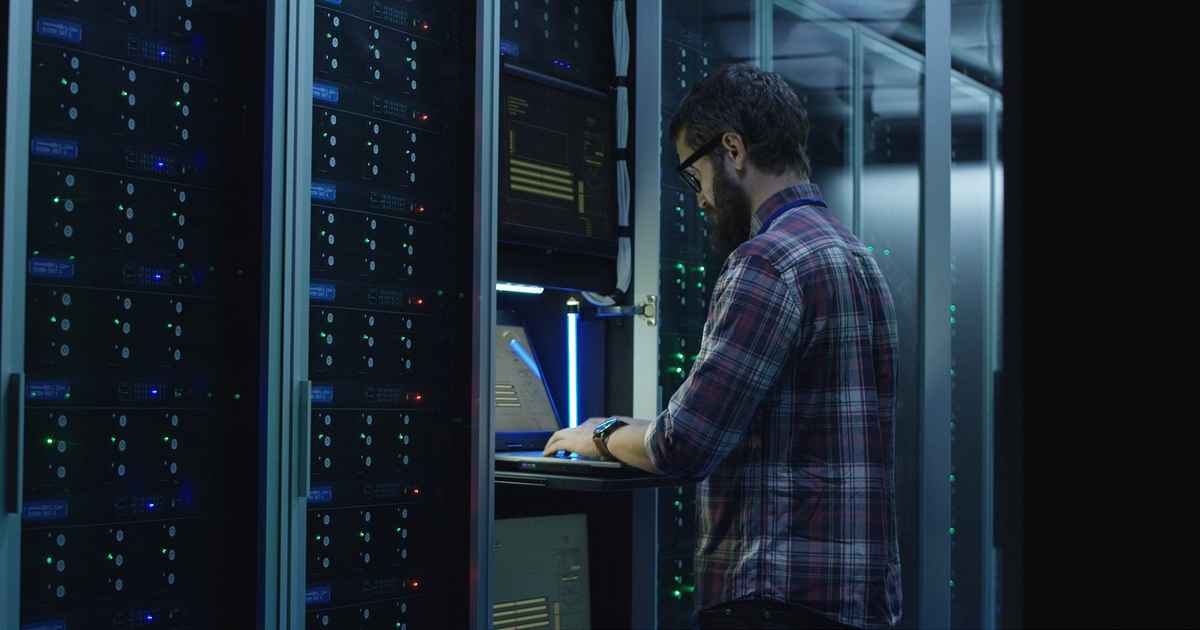
Hyper-Converged Infrastructure, IT Systems Management
Article | September 14, 2023
Data Center as a Service (DCaaS) is a hosting service that gives clients access to actual data center infrastructure and amenities. Through a Wide-Area Network, DCaaS enables clients to remotely access the provider's storage, server, and networking capabilities (WAN).
Businesses can tackle their on-site data center's logistical and financial issues by outsourcing to a service provider. Many enterprises rely on DCaaS to overcome the physical constraints of their on-site infrastructure or to offload the hosting and management of non-mission-critical applications.
Businesses that require robust data management solutions but lack the necessary internal resources can adopt DCaaS. DCaaS is the perfect answer for companies that are struggling with a lack of IT help or a lack of funding for system maintenance.
Added benefits data Center as a Service allows businesses to be independent of their physical infrastructure:
A single-provider API
Data centers without Staff
Effortlessly handle the influx of data
Data centers in regions with more stable climates
Data Center as a Service helps democratize the data center itself, allowing companies that could never afford the huge investments that have gotten us this far to benefit from these developments. This is perhaps the most important, as Infrastructure-as-a-Service enables smaller companies to get started without a huge investment.
Conclusion
Data center as a service (DCaaS) enables clients to access a data center remotely and its features, whereas data center services might include complete management of an organization's on-premises infrastructure resources. IT can be outsourced using data center services to manage an organization's network, storage, computing, cloud, and maintenance. The infrastructure of many businesses is outsourced to increase operational effectiveness, size, and cost-effectiveness.
It might be challenging to manage your existing infrastructure while keeping up with the pace of innovation, but it's critical to be on the cutting edge of technology. Organizations may stay future-ready by working with a vendor that can supply DCaaS and data center services.
Read More

Hyper-Converged Infrastructure
Article | July 13, 2023
As your organization scales, inevitably, so too will its infrastructure needs. From physical spaces to personnel, devices to applications, physical security to cybersecurity – all these resources will continue to grow to meet the changing needs of your business operations.
To manage your changing infrastructure throughout its entire lifecycle, your organization needs to implement a robust infrastructure lifecycle management program that’s designed to meet your particular business needs.
In particular, IT asset lifecycle management (ITALM) is becoming increasingly important for organizations across industries. As threats to organizations’ cybersecurity become more sophisticated and successful cyberattacks become more common, your business needs (now, more than ever) to implement an infrastructure lifecycle management strategy that emphasizes the security of your IT infrastructure.
In this article, we’ll explain why infrastructure management is important. Then we’ll outline steps your organization can take to design and implement a program and provide you with some of the most important infrastructure lifecycle management best practices for your business.
What Is the Purpose of Infrastructure Lifecycle Management?
No matter the size or industry of your organization, infrastructure lifecycle management is a critical process. The purpose of an infrastructure lifecycle management program is to protect your business and its infrastructure assets against risk.
Today, protecting your organization and its customer data from malicious actors means taking a more active approach to cybersecurity. Simply put, recovering from a cyber attack is more difficult and expensive than protecting yourself from one. If 2020 and 2021 have taught us anything about cybersecurity, it’s that cybercrime is on the rise and it’s not slowing down anytime soon.
As risks to cybersecurity continue to grow in number and in harm, infrastructure lifecycle management and IT asset management are becoming almost unavoidable. In addition to protecting your organization from potential cyberattacks, infrastructure lifecycle management makes for a more efficient enterprise, delivers a better end user experience for consumers, and identifies where your organization needs to expand its infrastructure.
Some of the other benefits that come along with comprehensive infrastructure lifecycle management program include:
More accurate planning;
Centralized and cost-effective procurement;
Streamlined provisioning of technology to users;
More efficient maintenance;
Secure and timely disposal.
A robust infrastructure lifecycle management program helps your organization to keep track of all the assets running on (or attached to) your corporate networks. That allows you to catalog, identify and track these assets wherever they are, physically and digitally.
While this might seem simple enough, infrastructure lifecycle management and particularly ITALM has become more complex as the diversity of IT assets has increased. Today organizations and their IT teams are responsible for managing hardware, software, cloud infrastructure, SaaS, and connected device or IoT assets. As the number of IT assets under management has soared for most organizations in the past decade, a comprehensive and holistic approach to infrastructure lifecycle management has never been more important.
Generally speaking, there are four major stages of asset lifecycle management. Your organization’s infrastructure lifecycle management program should include specific policies and processes for each of the following steps:
Planning. This is arguably the most important step for businesses and should be conducted prior to purchasing any assets. During this stage, you’ll need to identify what asset types are required and in what number; compile and verify the requirements for each asset; and evaluate those assets to make sure they meet your service needs.
Acquisition and procurement. Use this stage to identify areas for purchase consolidation with the most cost-effective vendors, negotiate warranties and bulk purchases of SaaS and cloud infrastructure assets. This is where lack of insights into actual asset usage can potentially result in overpaying for assets that aren’t really necessary. For this reason, timely and accurate asset data is crucial for effective acquisition and procurement.
Maintenance, upgrades and repair. All assets eventually require maintenance, upgrades and repairs. A holistic approach to infrastructure lifecycle management means tracking these needs and consolidating them into a single platform across all asset types.
Disposal. An outdated or broken asset needs to be disposed of properly, especially if it contains sensitive information. For hardware, assets that are older than a few years are often obsolete, and assets that fall out of warranty are typically no longer worth maintaining. Disposal of cloud infrastructure assets is also critical because data stored in the cloud can stay there forever.
Now that we’ve outlined the purpose and basic stages of infrastructure lifecycle management, it’s time to look at the steps your organization can take to implement it.
Read More

Application Storage, Data Storage
Article | July 12, 2023
Navigating the complex terrain of Hyper-Converged Infrastructure: Unveiling the best practices and innovative strategies to harness the maximum benefits of HCI for transformation of business.
Contents
1. Introduction to Hyper-Converged Infrastructure
1.1 Evolution and adoption of HCI
1.2 Importance of Adapting to the Changing HCI Environment
2. Challenges in HCI
2.1 Integration & Compatibility: Legacy System Integration
2.2 Efficient Lifecycle: Firmware & Software Management
2.3 Resource Forecasting: Scalability Planning
2.4 Workload Segregation: Performance Optimization
2.5 Latency Optimization: Data Access Efficiency
3. Solutions for Adapting to Changing HCI Landscape
3.1 Interoperability
3.2 Lifecycle Management
3.3 Capacity Planning
3.4 Performance Isolation
3.5 Data Locality
4. Importance of Ongoing Adaptation in the HCI Domain
4.1 Evolving Technology
4.2 Performance Optimization
4.3 Scalability and Flexibility
4.4 Security and Compliance
4.5 Business Transformation
5. Key Takeaways from the Challenges and Solutions Discussed
1. Introduction to Hyper-Converged Infrastructure
1.1 Evolution and adoption of HCI
Hyper-Converged Infrastructure has transformed by providing a consolidated and software-defined approach to data center infrastructure. HCI combines virtualization, storage, and networking into a single integrated system, simplifying management and improving scalability. It has gained widespread adoption due to its ability to address the challenges of data center consolidation, virtualization, and resource efficiency. HCI solutions have evolved to offer advanced features like hybrid and multi-cloud support, data deduplication, and disaster recovery, making them suitable for various workloads.
The HCI market has experienced significant growth, with a diverse ecosystem of vendors offering turnkey appliances and software-defined solutions. It has become the preferred infrastructure for running workloads like VDI, databases, and edge computing. HCI's ability to simplify operations, improve resource utilization, and support diverse workloads ensures its continued relevance.
1.2 Importance of Adapting to the Changing HCI Environment
Adapting to the changing Hyper-Converged Infrastructure is of utmost importance for businesses, as it offers a consolidated and software-defined approach to IT infrastructure, enabling streamlined management, improved scalability, and cost-effectiveness. Staying up-to-date with evolving HCI technologies and trends ensures businesses to leverage the latest advancements for optimizing their operations. Embracing HCI enables organizations to enhance resource utilization, accelerate deployment times, and support a wide range of workloads. In accordance with enhancement, it facilitates seamless integration with emerging technologies like hybrid and multi-cloud environments, containerization, and data analytics. Businesses can stay competitive, enhance their agility, and unlock the full potential of their IT infrastructure.
2. Challenges in HCI
2.1 Integration and Compatibility: Legacy System Integration
Integrating Hyper-Converged Infrastructure with legacy systems can be challenging due to differences in architecture, protocols, and compatibility issues. Existing legacy systems may not seamlessly integrate with HCI solutions, leading to potential disruptions, data silos, and operational inefficiencies. This may hinder the organization's ability to fully leverage the benefits of HCI and limit its potential for streamlined operations and cost savings.
2.2 Efficient Lifecycle: Firmware and Software Management
Managing firmware and software updates across the HCI infrastructure can be complex and time-consuming. Ensuring that all components within the HCI stack, including compute, storage, and networking, are running the latest firmware and software versions is crucial for security, performance, and stability. However, coordinating and applying updates across the entire infrastructure can pose challenges, resulting in potential vulnerabilities, compatibility issues, and suboptimal system performance.
2.3 Resource Forecasting: Scalability Planning
Forecasting resource requirements and planning for scalability in an HCI environment is as crucial as efficiently implementing HCI systems. As workloads grow or change, accurately predicting the necessary computing, storage, and networking resources becomes essential. Without proper resource forecasting and scalability planning, organizations may face underutilization or overprovisioning of resources, leading to increased costs, performance bottlenecks, or inefficient resource allocation.
2.4 Workload Segregation: Performance Optimization
In an HCI environment, effectively segregating workloads to optimize performance can be challenging. Workloads with varying resource requirements and performance characteristics may coexist within the HCI infrastructure. Ensuring that high-performance workloads receive the necessary resources and do not impact other workloads' performance is critical. Failure to segregate workloads properly can result in resource contention, degraded performance, and potential bottlenecks, affecting the overall efficiency and user experience.
2.5 Latency Optimization: Data Access Efficiency
Optimizing data access latency in an HCI environment is a rising challenge. HCI integrates computing and storage into a unified system, and data access latency can significantly impact performance. Inefficient data retrieval and processing can lead to increased response times, reduced user satisfaction, and potential productivity losses. Failure to ensure the data access patterns, caching mechanisms, and optimized network configurations to minimize latency and maximize data access efficiency within the HCI infrastructure leads to such latency.
3. Solutions for Adapting to Changing HCI Landscape
3.1 Interoperability
Achieved by: Standards-based Integration and API
HCI solutions should prioritize adherence to industry standards and provide robust support for APIs. By leveraging standardized protocols and APIs, HCI can seamlessly integrate with legacy systems, ensuring compatibility and smooth data flow between different components. This promotes interoperability, eliminates data silos, and enables organizations to leverage their existing infrastructure investments while benefiting from the advantages of HCI.
3.2 Lifecycle Management
Achieved by: Centralized Firmware and Software Management
Efficient Lifecycle Management in Hyper-Converged Infrastructure can be achieved by implementing a centralized management system that automates firmware and software updates across the HCI infrastructure. This solution streamlines the process of identifying, scheduling, and deploying updates, ensuring that all components are running the latest versions. Centralized management reduces manual efforts, minimizes the risk of compatibility issues, and enhances security, stability, and overall system performance.
3.3 Capacity Planning
Achieved by: Analytics-driven Resource Forecasting
HCI solutions should incorporate analytics-driven capacity planning capabilities. By analyzing historical and real-time data, HCI systems can accurately predict resource requirements and assist organizations in scaling their infrastructure proactively. This solution enables efficient resource utilization, avoids underprovisioning or overprovisioning, and optimizes cost savings while ensuring that performance demands are met.
3.4 Performance Isolation
Achieved by: Quality of Service and Resource Allocation Policies
To achieve effective workload segregation and performance optimization, HCI solutions should provide robust Quality of Service (QoS) mechanisms and flexible resource allocation policies. QoS settings allow organizations to prioritize critical workloads, allocate resources based on predefined policies, and enforce performance guarantees for specific applications or users. This solution ensures that high-performance workloads receive the necessary resources while preventing resource contention and performance degradation for other workloads.
3.5 Data Locality
Achieved by: Data Tiering and Caching Mechanisms
Addressing latency optimization and data access efficiency, HCI solutions must incorporate data tiering and caching mechanisms. By intelligently placing frequently accessed data closer to the compute resources, such as utilizing flash storage or caching algorithms, HCI systems can minimize data access latency and improve overall performance. This solution enhances data locality, reduces network latency, and ensures faster data retrieval, resulting in optimized application response times and improved user experience.
4. Importance of Ongoing Adaptation in the HCI Domain
continuous adaptation is of the utmost importance in the HCI domain. HCI is a swiftly advancing technology that continues to provide new capabilities. Organizations are able to maximize the benefits of HCI and maintain a competitive advantage if they stay apprised of the most recent advancements and adapt to the changing environment.
Here are key reasons highlighting the significance of ongoing adaptation in the HCI domain:
4.1 Evolving Technology
HCI is constantly changing, with new features, functionalities, and enhancements being introduced regularly. Ongoing adaptation allows organizations to take advantage of these advancements and incorporate them into their infrastructure. It ensures that businesses stay up-to-date with the latest technological trends and can make informed decisions to optimize their HCI deployments.
4.2 Performance Optimization
Continuous adaptation enables organizations to fine-tune their HCI environments for optimal performance. By staying informed about performance best practices and emerging optimization techniques, businesses can make necessary adjustments to maximize resource utilization, improve workload performance, and enhance overall system efficiency. Ongoing adaptation ensures that HCI deployments are continuously optimized to meet evolving business requirements.
4.3 Scalability and Flexibility
Adapting to the changing HCI landscape facilitates scalability and flexibility. As business needs evolve, organizations may require the ability to scale their infrastructure, accommodate new workloads, or adopt hybrid or multi-cloud environments. Ongoing adaptation allows businesses to assess and implement the necessary changes to their HCI deployments, ensuring they can seamlessly scale and adapt to evolving demands.
4.4 Security and Compliance
The HCI domain is not immune to security threats and compliance requirements. Ongoing adaptation helps organizations stay vigilant and up-to-date with the latest security practices, threat landscapes, and regulatory changes. It enables businesses to implement robust security measures, proactively address vulnerabilities, and maintain compliance with industry standards and regulations. Ongoing adaptation ensures that HCI deployments remain secure and compliant in the face of evolving cybersecurity challenges.
4.5 Business Transformation
Ongoing adaptation in the HCI domain supports broader business transformation initiatives. Organizations undergoing digital transformation may need to adopt new technologies, integrate with cloud services, or embrace emerging trends like edge computing. Adapting the HCI infrastructure allows businesses to align their IT infrastructure with strategic objectives, enabling seamless integration, improved agility, and the ability to capitalize on emerging opportunities.
The adaptation is thus crucial in the HCI domain as it enables organizations to stay current with technological advancements, optimize performance, scale infrastructure, enhance security, and align with business transformation initiatives. By continuously adapting to the evolving HCI, businesses can maximize the value and benefits derived from their HCI investments.
5. Key Takeaways from Challenges and Solutions Discussed
Hyper-Converged Infrastructure poses several challenges during the implementation and execution of systems that organizations need to address for optimal performance. Integration and compatibility issues arise when integrating HCI with legacy systems, requiring standards-based integration and API support.
Efficient lifecycle management is crucial, involving centralized firmware and software management to automate updates and enhance security and stability. Accurate resource forecasting is vital for capacity planning, enabling organizations to scale their HCI infrastructure effectively. Workload segregation demands QOS mechanisms and flexible resource allocation policies to optimize performance.
Apart from these, latency optimization requires data tiering and caching mechanisms to minimize data access latency and improve application response times. By tackling these challenges and implementing appropriate solutions, businesses can harness the full potential of HCI, streamlining operations, maximizing resource utilization, and ensuring exceptional performance and user experience.
Read More

Article | June 2, 2021
StarlingX—the open source edge computing and IoT cloud platform optimized for low-latency and high-performance applications—is available in its 5.0 release today. StarlingX combines Ceph, OpenStack, Kubernetes and more to create a full-featured cloud software stack that provides everything carriers and enterprises need to deploy an edge cloud on a few servers or hundreds of them.
Read More